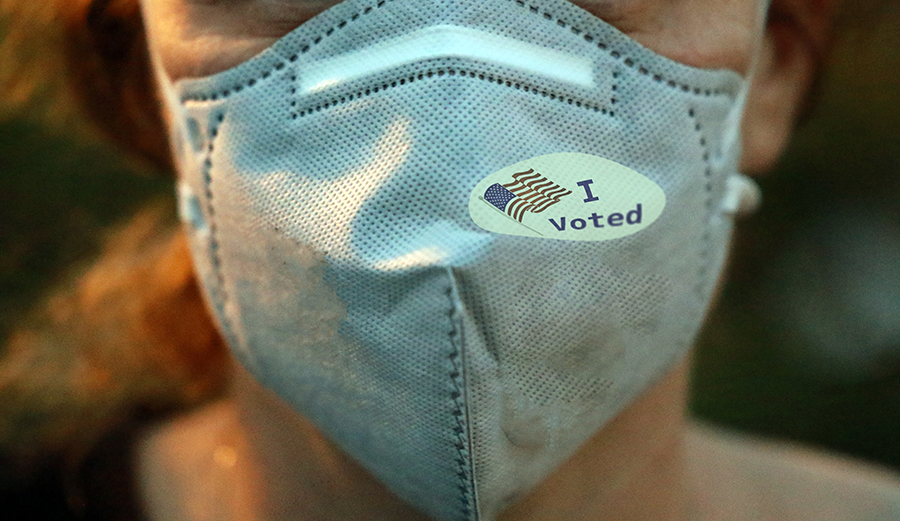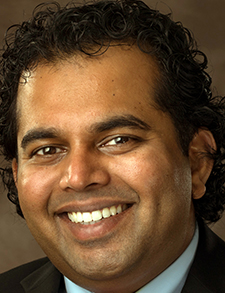 Politics plays a vital role in health care. In Thomas Oliver’s article, “The Politics of Public Health Policy,”1 he emphasizes how political decisions are crucial in how health care policy is structured and implemented. He states, “politics is central in determining how citizens and policymakers recognize and define problems with existing social conditions and policies, in facilitating certain kinds of public health interventions but not others, and in generating a variety of challenges in policy implementation.”
Politics plays a vital role in health care. In Thomas Oliver’s article, “The Politics of Public Health Policy,”1 he emphasizes how political decisions are crucial in how health care policy is structured and implemented. He states, “politics is central in determining how citizens and policymakers recognize and define problems with existing social conditions and policies, in facilitating certain kinds of public health interventions but not others, and in generating a variety of challenges in policy implementation.”
Thus, voter participation by health care professionals in local, state, and federal elections is paramount, as choices at the ballot can drastically shape health equity for our patient populations.
Through the years, physicians appear to have evolved regarding engagement in their civic duty. Before 2002, studies show that physicians appeared to have lower adjusted voting rates compared to lawyers or the general population.2 However, a recently published cross-sectional study in the Journal of the American Medical Association found that physicians were as likely to vote as the general population in the 2018 midterms and 2020 presidential elections.3 The authors speculate that increased focus on physicians’ roles and health care reform policies are likely to have led to increased physician voter turnout during the 2020 election.
How health care policy affects patients and hospitalists
Hospitalists, like all clinicians, are keenly aware of the role social determinants of health play on a patient’s disease processes. These social determinants of health are influenced by policies that are constructed and enforced through deliberate actions of legislation.
During a 2021 National Academies Sciences Engineering Medicine workshop on civic engagement, Daniel E. Dawes, health care attorney, author of the book, “Political Determinants of Health,” and the executive director of government affairs and health policy at Morehouse School of Medicine in Atlanta said, “For every social determinant of health, there was a preceding legal, regulatory, ordinance, legislative or other policy decision that resulted in that social determinant of health. Those are the political determinants of health.” Dawes argues that if we need to address the social determinants of health, we need to connect them to their upstream political roots. These upstream decisions have downstream consequences.4
To understand these connections to political roots, we can look at an example fresh in every clinician’s mind: the recent COVID-19 pandemic. We’ve seen exacerbations in health care inequities as evidenced by increased mortality rates and worse outcomes in different patient demographics such as race. A Chicago-based study from April 2020 revealed that even though the African American community comprises only 30% of the city’s population, they represented 50% of all COVID-19 cases and 70% of its COVID-19 deaths.5
Many minority and underprivileged communities live in neighborhoods that don’t have access to high-quality health care. These social drivers of health, such as the neighborhood in which one lives, access to health care, availability of healthy foods, literacy rates, etc. are driven by policies to create the world these communities live in.
As hospitalists, we also see the effects of policies and procedures in our day-to-day clinical work. Recently we’ve seen an increase in insurance denials for our hospitalized patients, which has been driven in part by variable criteria of insurance payors and a lack of oversight over the denial process.6 Similarly, there are policies around reimbursement also affecting our wages.
Therefore, it’s important to be a part of or have representation during this decision-making process. Elections are those mechanisms through which we can select representatives to make our voices heard.
Register to vote and plan for election day
A common cause cited in the Journal of the American Medical Association article for physicians not being able to vote was not meeting the voter-registration deadline.3
Every state except North Dakota requires citizens to register if they want to become voters. Depending on your state, the registration deadline could be as much as a month before an election. Consider logging onto www.vote.org to check the status of your voter registration. The website also helps you register and sets reminders to be sent to you for the election.
Health care providers often struggle with balancing their clinical responsibilities and participating in their civic duties, especially on election day. It’s important to find out in advance what the policies and practices are when it comes to election day at your institution. These include finding out whether you have protected or paid time to vote. At a departmental and peer level, could you find a colleague to cover for you and carry your pager while you go vote?
Resources for your patients
Low-income populations and marginalized communities tend to vote at lower rates than the general population.2 An analysis done by the Washington Center for Equitable Growth on income group-based voting in the 2020 election revealed that despite increased voter turnout in every income group, only about 65% of low-income individuals voted, compared to 88% in the high-income category.7
Typically, many lower-income patient populations and uninsured patients, when admitted to the hospital, are taken care of by hospitalists. To vote or register to vote is even more challenging for patients when hospitalized. As clinicians who are acutely aware of the socioeconomic issues our patient populations deal with, it’s important to find ways to help them practice their civic duties, especially for marginalized communities.
There are non-partisan organizations that facilitate connecting health care providers and health systems with civic engagement. The website www.vot-er.org provides training on how to initiate a non-partisan conversation about civic duties with patients. The website www.civichealthalliance.org provides a downloadable toolkit to promote voter registration in the health care setting. Both organizations, on request, can provide badges, flyers, and prescription cards with QR codes to help patients register and provide legal guidance around implementing health-care-based voter registration.
The website www.patientvoting.com is owned by the non-partisan organization of the same name, formed around the 2020 presidential elections to increase voter turnout among registered voters who are unexpectedly hospitalized, using Emergency Absentee Ballots. When patients are hospitalized acutely, these patients may qualify for the option of using an Emergency Absentee Ballot, which should be considered for your hospitalized patients. According to the National Conference of State Legislatures, “requirements to qualify for an emergency ballot vary, but the most common reason that states permit a voter to use this option is due to a medical emergency such as unforeseen illness, confinement to a medical facility, disabilities or accidents resulting in injury.”8 Clinicians should keep in mind that deadlines and processes for these emergency ballots vary by state.
A call to action
As health care professionals, we know the issues that affect our patients, our health care system, and our profession. The challenges we face in our day-to-day clinical duties are often created through legislation enacted by elected representatives. Civic duty is akin to clinical duty. We know the challenges our patients face—costs of medications, access to care, etc. And we know many of our patients struggle with taking time off to vote, as their financial constraints don’t allow them to do so.
Voter registration deadlines and election dates are preset. Consider them as dates for an elective procedure or doctor’s appointment. Also, elections happen every few years, but the decisions enacted by legislators can last for generations. With the aid of your colleagues, you can plan to allot a few hours in your schedule to vote. If we don’t vote, do we have the right to sit at the lunch table complaining about insurance and documentation woes, the rising cost of care, and transition-of-care challenges, when we didn’t even try to vote for representatives who understood our voices and concerns? As the saying goes, “If you’re not at the table, you’re on the menu.”
Key Points
- Voter participation by hospitalists in local, state, and federal elections is critical—choices made at the ballot shape health equity.
- Previously, studies showed physicians had lower voting rates compared to lawyers and the general population.
- “The Political Determinants of Health” by Daniel E. Dawes is a must-read for hospitalists.
- Health care policies directly affect patients and hospitalists.
- PatientVoting.com is a non-partisan group that helps register voters who are hospitalized.
- Visit Vote.org to check the status of your voter registration. You can also register to vote and set reminders for election days.
- Review your institution’s policy on taking time off to vote; plan your work day accordingly.
- Visit Vot-er.org to learn how to have conversations about civic duties with patients.
- CivicHealthAlliance.org is a site that provides downloadable tools to promote voter registration in health care settings.
- Non-partisan organizations can provide badges, flyers, and prescription cards with QR codes to help patients register and provide legal guidance around implementing health-care-based voter registration.
- Vote!

Dr. Skandhan
Dr. Skandhan is an academic hospitalist and associate program director for the internal medicine residency program at Southeast Health, Dothan, Ala. He also serves as the director of physician integration for Southeast Health Statera Network. He’s a member of The Hospitalist’s editorial board and a current scholar for the Leadership in Health Policy Fellowship at the Society of General Internal Medicine.
References
- Oliver TR. The politics of public health policy. Annu Rev Public Health. 2006;27:195-233. doi: 10.1146/annurev.publhealth.25.101802.123126.
- Grande D, et al. Do doctors vote? J Gen Intern Med. 2007;22(5):585-9. doi: 10.1007/s11606-007-0105-8.
- Ahmed A, et al. Analysis of reported voting behaviors of US physicians, 2000-2020. JAMA Netw Open. 2022;5(1):e2142527. doi:10.1001/jamanetworkopen.2021.42527.
- Dawes D. The political determinants of health. Baltimore, MD. Johns Hopkins University Press; 2020.
- Reyes, C, et al. Chicago’s coronavirus disparity: Black Chicagoans are dying at nearly six times the rate of white residents, data show. Chicago Tribune. Apr 7, 2020. Available online at: https://www.chicagotribune.com/coronavirus/ct-coronavirus-chicago-coronavirus-deaths-demographics-lightfoot-20200406-77nlylhiavgjzb2wa4ckivh7mu-story.html. Accessed August 17, 2022.
- Singh S, et al. The growing epidemic of insurance denials: A frontline perspective. J Hosp Med. 2022;17(2):132-135. doi: 10.1002/jhm.2775
- Clemens, A, et al. Evidence from the 2020 election shows how to close the income voting divide. Washington Center for Equitable Growth. https://equitablegrowth.org/evidence-from-the-2020-election-shows-how-to-close-the-income-voting-divide/. Published July 08, 2021. Accessed August 17, 2022.
- National Conference of State Legislatures. Absentee voting in case of a personal emergency. National Conference of State Legislatures website. Available at https://www.ncsl.org/research/elections-and-campaigns/absentee-voting-in-case-of-a-personal-emergency.aspx. Published October 30, 2020. Accessed August 17, 2022.
Additional Reading from the Journal of Hospital Medicine Vote like your health depends on it: Voter engagement in the healthcare setting
It’s time we got politics out of medicine and our professional society